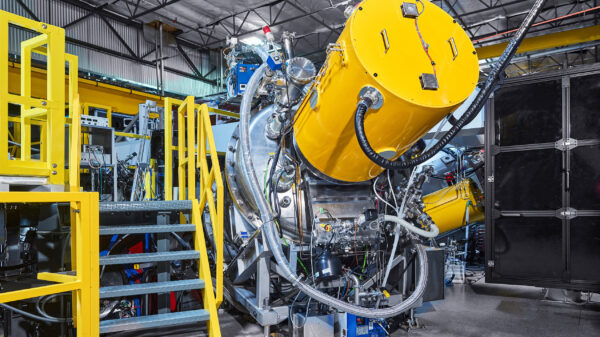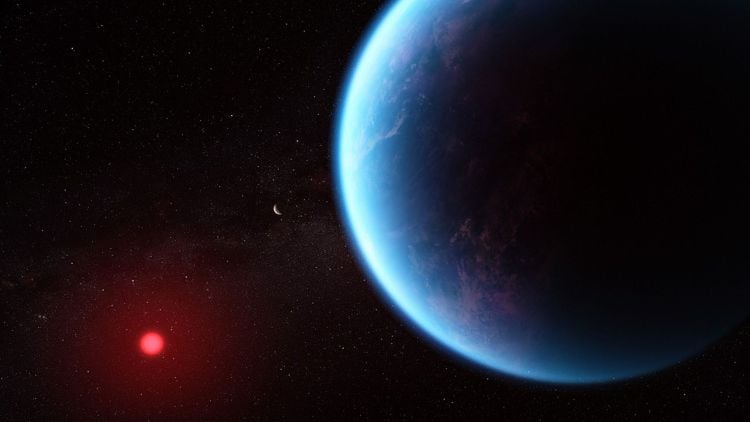A recent study published in the journal Nature provides significant insights into how liquid water may form on exoplanets, shedding light on the potential for life beyond Earth. An international team of scientists conducted laboratory experiments to simulate the extreme conditions that exist on these distant worlds, focusing on the interaction between hydrogen-rich atmospheres and magma oceans beneath their surfaces.
The researchers utilized a diamond anvil cell to expose materials to conditions reaching 4000 K (equivalent to 3,727 degrees Celsius or 6,740 degrees Fahrenheit) and pressures between 16 to 60 gigapascals (GPa). These parameters mirror the environments expected on many exoplanets, allowing scientists to test existing computer models regarding water production from atmospheric hydrogen and the magma underneath.
The findings indicate that a magma ocean rich in hydrogen, combined with the reduction of iron oxide, leads to considerable water generation. This process, according to Dr. Anat Shahar, a Staff Scientist and Deputy for Research Advancement at the Carnegie Institution for Science and co-author of the study, supports longstanding theories about planetary formation. She stated, “The presence of liquid water is considered critical for planetary habitability. This work demonstrates that large quantities of water are created as a natural consequence of planet formation.”
Understanding Sub-Neptunes and Their Potential
The study primarily focuses on exoplanets known as sub-Neptunes, which possess masses between those of Earth and Neptune. These planets typically feature rocky interiors similar to Earth, along with hydrogen-heavy atmospheres akin to those of Neptune. While this combination is not observed in our solar system, astronomers have identified approximately 1,000 sub-Neptunes among the over 6,000 confirmed exoplanets.
Some sub-Neptunes may also be classified as super-Earths, depending on their mass and radius. Notable examples of sub-Neptunes that orbit within or near their star’s habitable zone include K2-18 b, Kepler-138 d, and TOI-270 d. These exoplanets are located approximately 124 light-years, 218 light-years, and 73 light-years from Earth, respectively, and all orbit M-dwarf stars, which are smaller and cooler than our Sun.
M-dwarf stars are notable for their long lifetimes, which can span trillions of years, compared to our Sun’s estimated 10 billion years. This longevity presents a unique opportunity for life to potentially develop on planets within their habitable zones.
Implications for the Search for Extraterrestrial Life
Historically, astronomers have concentrated on finding exoplanets that closely resemble Earth. However, this study indicates that planets with conditions distinct from those in our solar system may also harbor the potential for life. The research suggests that water could be more widespread on exoplanets than previously thought, particularly under classical models of planetary formation and evolution.
As researchers continue to explore the mechanisms behind water formation on exoplanets, the implications for astrobiology and the search for life beyond Earth are profound. The newfound understanding of water generation processes may refine the criteria for identifying viable targets in the ongoing quest to discover extraterrestrial life.
The study opens avenues for future research, prompting scientists to investigate further how variations in planetary composition and atmospheric conditions can influence the presence of water. With every step forward, the mystery surrounding the potential for life on distant worlds becomes increasingly tangible.






































































